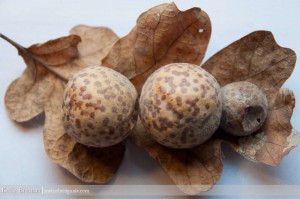We talk about ecology a lot, but what is it really? Chances are, unless you took some ecology classes you may have missed out on some aspects of ecology. A better understanding of ecology can help with designing and creating any wildlife habitat. Additionally, the more you know about ecology the better you’ll understand articles or books and find it easier to explain concepts and educate others. Let’s start with the basics, what exactly is ecology?
Ecology- the relationship between organisms and the environment (from the Greek words oikos, home, and logos, to study).
Ecology studies not only the interactions between the various organisms but determines distribution and abundance of the organisms. There are many divisions of ecology that study many of different aspects such as population ecology, which focuses on the number of individuals living in an area, landscape ecology, which focuses on the factors controlling the landscape, community ecology, which is all of the interacting species in an area and ecosystem ecology, which looks at energy flow and chemical cycling.
How do these all connect? A group of one type of organism that lives in an area is a population while all the populations in an area together are a community. The community of living organisms live in a nonliving surrounding which is an ecosystem. The living organisms are considered biotic while the nonliving components, such as chemical and physical elements are abiotic. All of the ecosystems together create the biosphere which can be thought of as the global ecosystem. There are two types of organisms, autotrophs are organisms that can manufacture their own food through cellular respiration and photosynthesis such as with plants. Heterotrophs are organisms that take in preformed nutrients such as animals.
Living things are all classified, a process that has its own long, complicated, but fascinating history. Groups of individuals that are the same are considered a species while a group of related species are gathered as a genus. For example, those familiar with botanic names of plants know that Acer is a Maple, which is the genus. So in Acer macrophyllum (Big Leaf Maple), macrophyllum is the species name. It goes even higher than that with similar genera grouped into families, similar families into orders, similar orders into classes, similar classes into phyla (divisions in plants), similar phyla into kingdoms and similar kingdoms into the top of the heap, domains. All organisms were originally related and changes through time because of evolution, created diversity.
There are dozens of terms you’ve no doubt encountered such as succession, natural selection, niche, carrying capacity, competition, diversity, food chain/food web, keystone species, biodiversity and so on (let’s cover these in future posts).

Oak Leaf Gall
One of my favorite examples of ecology was one taught to me in an ecology class, that of the leaf gall. The Oregon White Oak (Quercus garryana) has a reaction to the gall-wasp who lays an egg on the leaves of the Oak. The tree then forms a gall around the egg to prevent the larvae from eating the leaves and instead supplies it with nutrients inside the gall. However it doesn’t end there, sometimes a parasitic wasp will lay it’s egg inside the gall-wasp larvae which is inside the gall. At other times a caterpillar may eat its way inside the gall and proceed to devour everything inside the gall including the wasp larvae or the parasitic wasp. All of this on a single leaf.






One Comment